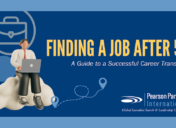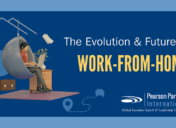The Chief Change Officer
 If your company would like to operate more effectively, improve productivity, or realign the organization, consider adding a chief change officer (CCO) to the senior leadership team. Driving a major change initiative requires leadership from the top. So if the CEO needs to focus on other priorities, it’s important to designate an executive to lead and coordinate the effort.
If your company would like to operate more effectively, improve productivity, or realign the organization, consider adding a chief change officer (CCO) to the senior leadership team. Driving a major change initiative requires leadership from the top. So if the CEO needs to focus on other priorities, it’s important to designate an executive to lead and coordinate the effort.
In some cases, the senior human resources executive can serve as the CCO for the duration of the initiative. If technology is a major aspect of the program— such as a Six Sigma or Lean implementation—the chief information officer could be the logical change leader.
But it’s not enough to shift an executive into the CCO slot or create a new position. That leader must have the right skills and personality to guide the organization through the steps of the process. That includes planning for change, outlining the new vision, building a “change team,” and communicating regularly with all employees and other stakeholders in the organization.
The CCO should also understand the typical steps involved in any major change initiative, including the excitement and fear associated with making a change, the natural resistance that accompanies change (“we’ve always done it this way…”), and the eventual acceptance of the new vision, behaviors and actions. It’s much easier for people to recognize the need for change than it is to actually modify their actions and behaviors. Therefore, the CCO must be prepared to handle the emotional aspects of the initiative—from restraining the “gung-ho” early adopters to setting deadlines with consequences for the “laggards.”
A good CCO will also have the mental flexibility to adjust to unexpected issues that often arise from a change initiative, and make any follow-up recommendations to the senior leadership team. That might involve modifying the timeframe for the project or making further adjustments to improve the organization’s performance. In summary, a strong CCO who is optimistic, a good communicator and able to think in fresh ways can make a lasting imprint by preparing an organization for the future.
Read more about implementing change, from our recent HR Roundtable discussion “Make Waves.”















